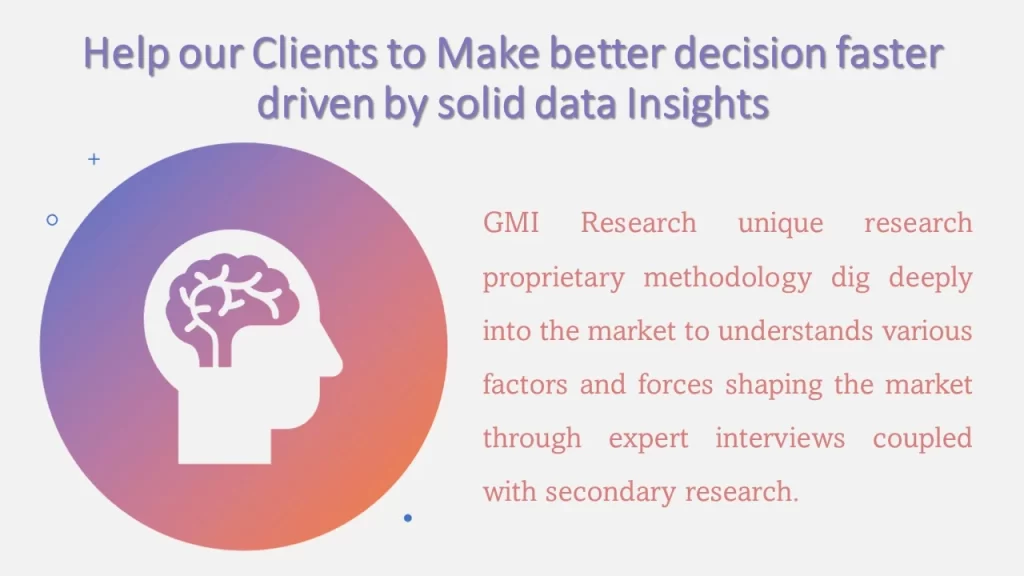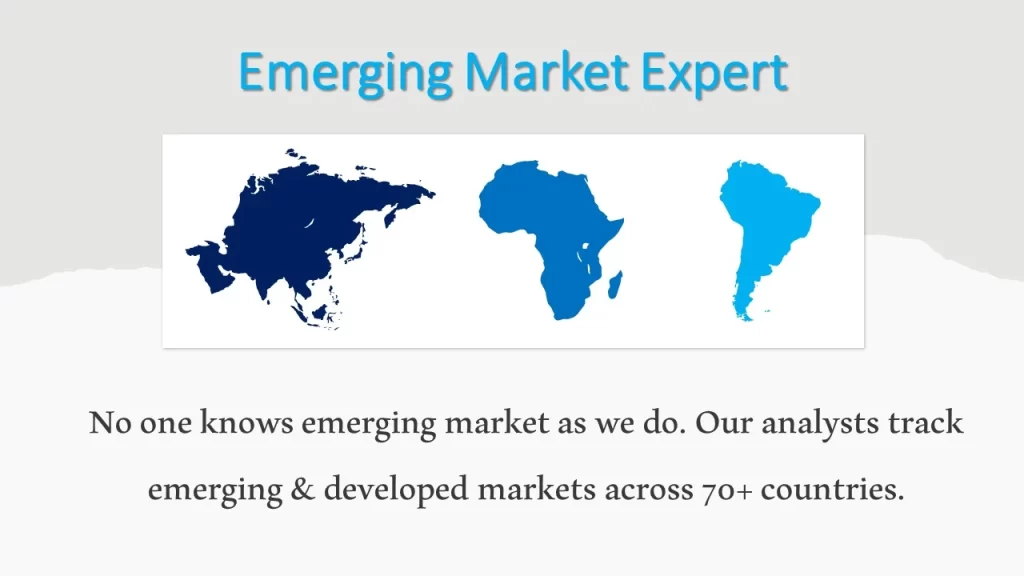Refractories Market Size, Share, Trends and Analysis Report – Global Opportunities & Forecast, 2023-2030
Refractories Market was valued at USD 23.9 billion in 2022 and is expected to reach USD 31.4 billion in 2030 and projected to witness a CAGR of 3.4% during the forecast period.
 Major Refractories Market Drivers
Major Refractories Market Drivers
The global refractories market growth is propelled by the rise in infrastructural development in developing countries, an increase in usage of glass, steel, and iron by the automotive industry, and growing consumption of non-ferrous materials. The rise in urbanization and industrialization, particularly in emerging economies like China and India, has prompted substantial investments in commercial and residential construction. Global Construction Perspective and Oxford Economies project an 85% growth of USD 15.55 trillion by 2030. China, the US, and India are estimated to contribute, accounting for 57% of overall global growth. In addition, China is one of the fastest-growing countries is propelling an increased demand for travel, requiring continuous development of roadways, and railways. This, in turn, has contributed to rising growth of the automotive industry across China. The rise in infrastructure development in developing countries or commercial and residential buildings, is thereby projected to foster the demand for refractories in the iron and steel and cement industries. The growing construction activities in these countries are also projected to drive the glass industry, thereby driving the refractories demand.
The automotive industry’s recovery, propelled by a rise in electric vehicles, has generated momentum for vehicle manufacturing materials including iron, glass, and steel. As per the report by World Steel Association, and the International Organization of Motor Vehicles suggested that steel-based products comprise 60% of a vehicle’s body structure. Whereas, Glass, constituting >6% of the vehicle’s body weight, is an important component. The demand for materials such as glass and steel from the automotive industry has increased, fostered by their significance in manufacturing. Consequently, the growth of the automotive industry is projected to contribute to the growth of the refractories market globally.
Why Purchase a Standard Report When You Can Customize this Report
Please Let us know your Customization Requirements
Although to address the future fuel economy demands, the automotive industry is discovering innovative solutions, prompting continuous investments in advanced materials by the steel industry. This has resulted in the introduction of an innovative variation of innovative steel tailored for the automotive sector. The development of Advanced High Strength Steel has proven important in helping the automotive industry address growing regulatory standards. Moreover, yearly introductions of new car models incorporating higher-strength steel components, lightweight, offer a cost-effective solution to the rising need for enhanced safety and fuel economy. The automotive industry’s increasing adoption of improved steel is fostering product demand.
Refractories are witnessing demand in the power generation sector, specifically for applications in the inside lining, boilers, and other critical locations. The growth in power generation can be attributed to the global demand for power, renewable energy expansion, and a growing usage of sustainable solutions for the future. As per the Energy Information Administration, geothermal electricity generated touched 15.89 billion kilowatt hours during 2020, somewhat lower than the 16.22 billion kilowatt hours during 2019. In addition, the Central Electricity Authority predicts India’s power demand to reach 817 GW by 2030. The thriving power generation sector is propelling demand for refractory materials such as aluminum oxides, zirconium silicate, sillimanite, and many more across different applications in the power industry, resulting in growth opportunities in the global market.
Meanwhile, the manufacturing process of refractories involves the emission of organic particulate matter and different harmful gases, including nitrogen oxides, fluorides, carbon dioxide, volatile organic compounds, and sulfur dioxide. Particulate Matter emissions result from procedures such as grinding, drying, calcining, and crushing, while gases and VOCs are released during firing and tar & pitch operations, respectively. In the United States, regulations govern the disposal of refractory waste and provide guidelines for refractory use, encouraging the recycling of chrome-based refractories, particularly prevalent in the iron & steel industry. In Europe, initiatives such as ReStaR focus on developing the reliability and precision of present refractory testing standards. Environmental regulations and restrictions on refractory material use serve as limitations on the growth of the refractory market.
Sample Request
To have an edge over the competition by knowing the market dynamics and current trends of “Refractories Market” request for Sample Report here
Whereas, refractory materials that have been used and recycled to create secondary raw materials are referred to as refractory grogs. These can be classified into two types: low-quality and high-quality refractories. The usage of recycled refractories is conditional upon the quality of the original material, while 100% of high-quality recycled refractories can be employed in other procedures, only 0-30% of those obtained from low-quality refractories can be effectively used. The demand for recycling refractory goods has increased due to rising costs of raw materials and freight, coupled with environmental pressure encouraging businesses to look for more eco-friendly alternates for refractory applications are factors fostering the shift towards refractory recycling.
From 2008 through 2010, the global refractory industry observed significant volatility, with certain raw materials becoming nearly difficult to attain owing to increase in demand and low supply. This period prompted increasing pressure on companies to adopt environmental responsibility by decreasing their carbon footprints. Present enforcement of increased taxes on landfill locations and emissions, along with proposed tax incentives, focuses on motivating companies to develop their waste recycling initiatives. The economic recession during early 2009 has an impact on refractory sales, leading manufacturers to work on decreasing prices to maintain market share. Thereby, recycling refractories becomes a strategic approach for producers to lower production costs, presenting lucrative opportunities for market growth.
By End-Use Industry, Iron & Steel Segment Registered the Largest Market Size in the Global Refractories Market
The market is classified by end-use industry, including non-ferrous metals, iron & steel, cement, glass, and many more. The iron & steel segment is predicted to continue its growth in the forecast period due to its extensive applications in reactors, furnaces, and vessels in steel manufacturing. In addition, the frequent replacement in the iron and steel industry of refractory lining, occurring every 30 minutes to two days in dissimilar stages of the manufacturing procedure, leads to substantial consumption.
The advancement in glass melting technology relies largely on the high performance and progress of refractory products. Selecting refractories is important in the construction of a glass furnace, as the furnace’s longevity is directly tied to the quality of refractories. Alumina Zirconia Silica serves as the primary structural refractory material for glass furnaces, due to its resistance to wetting by molten glass and minimal reactivity with it. The rising glass industry, influenced by the shift to sustainable alternatives from plastics, is driving an increased demand for refractories.
Dependable refractory solutions are essential for improving efficiency in cement manufacturing. Rotary kilns within the cement industry employ refractory bricks, while monolithic refractory is applied in higher wear areas, typically at the outlet of cement kilns. In the pre-heater section of cement plants, dense castables line cyclones owing to their wear resistance and compatibility with complex shapes. Beyond cement, refractory applications extend to petrochemicals, boilers, military, light, machinery, electric power, and other industries.
By Region, the Asia Pacific Region Accounted for the Largest Market Share in the Global Refractories Market
The Asia Pacific region is projected to dominate the largest share of the global market due to the robust presence of different end-use industries. Asia Pacific contributes >70% to global steel production, and China alone contributes approx 50% as per the World Steel Association. In addition, the region’s presence in cement and non-ferrous metal industries further solidifies its leading position in the global market.
In addition, the robust demand for refractories in the Asia Pacific region is propelled by thriving sectors such as metallurgy, power generation, and cement. The growing usage of refractories in different facets of cement production, including kiln hoods, grate coolers, preheaters, riser ducts, and others, significantly contributes to market growth. Cement output in China is anticipated to steady at 1-1.5 billion tons by 2030, driven by increased production for construction and infrastructure projects. In South Korea, the private residential sector observed cumulative construction orders of USD 70.3 billion, presenting a 46.5% increase in 2020 compared to 2019, as reported by the International Trade Administration. The growth of refractories in the Asia Pacific region is primarily propelled by different applications, especially construction leading the APAC refractories market growth opportunities in the forecast period.
 Top Market Players
Top Market Players
Various notable players operating in the market include RHI Magnesita GmbH, Vesuvius, Krosaki Harima Corporation, SHINAGAWA REFRACTORIES CO., LTD., Saint-Gobain, Coming Incorporated, Morgan Advanced Materials plc, CoorsTek Inc., Harbisonwalker International, and Imerys Refractory Minerals, among others.
Key Developments:
-
- In 2023, INTOCAST AG successfully acquired EXUS Refractories S.p.A, to update an innovative technological advancement in its production unit which further reinforced its position in the market.
- In 2023, RHI Magnesita GmbH announced an acquisition of Dalmia Bharat Refractories Limited’s Indian refractory business to address the growing demand from end-use industries.
- In 2021, ArcelorMittal Refractories, collaborated with Krosaki Harima Corporation. The collaboration is intended to optimize production capacities and expand ArcelorMittal Refractories’ product portfolio using Krosaki Harima’s manufacturing technology.
- In 2021, Imerys initiated production at its new Vizhag refractory plant with an investment of INR 350 crores to cater the demand of local customers. The new plant will supply the refractory and the construction market with calcium aluminate binders.
- In 2021, the Refratechnik Group collaborated with Höganäs Borgestad Group for the supply of refractory products.
- In 2020, Carbo Sun Luis was acquired by Morgan Advanced Materials plc successfully in order to support and expand the network in Argentina, and Chile.
- In 2020, Morgan Advanced Materials plc successfully acquired of Carbo Sun Luis to support and grow the network in Chile, Argentina, and Chile.
- In 2020, Vesuvius introduced its new product – KALPUR. It is a Direct pouring application on an Automatic High-Pressure Green Sand Moulding Line and have improved yield and directional solidification.
- In 2019, RHI Magnesita invested EUR 40 million for the building of new Dolomite Resource Centre Europe. This center will be used in the entire European market for mining and processing at the Hochfilzen site in Tyrol before being transported by rail to France.
Segments Covered in the Report:
The global refractories market has been segmented based on form, alkalinity, end-use Industry, and regions. Based on Form, the market is segmented into shaped refractories & unshaped refractories. Based on alkalinity, the market is segmented into acidic & neutral refractories and basic refractories. Based on end-use Industry, the market is segmented into iron & steel, power generation, non-ferrous metal, cement, glass, other industries.
|
Report Coverage |
Details |
| Market Revenues (2022) |
USD 23.9 Billion |
| Market Base Year |
2022 |
| Market Forecast Period |
2023-2030 |
| Base Year & Forecast Units |
Revenues (USD Billion) |
| Market Segment | By Form, By Alkalinity, By End-Use Industry, By Region |
| Regional Coverage | Asia Pacific, Europe, North America, and RoW |
| Companies Profiled | RHI Magnesita GmbH, Vesuvius, Krosaki Harima Corporation, SHINAGAWA REFRACTORIES CO., LTD., Saint-Gobain, Coming Incorporated, Morgan Advanced Materials plc, CoorsTek Inc., Harbisonwalker International, and Imerys Refractory Minerals, among others; a total of 10 companies covered. |
| 25% Free Customization Available | We will customize this report up to 25% as a free customization to address our client’s specific requirements |
Market Segmentation
Global Refractories Market by Form
-
- Shaped Refractories
- Unshaped Refractories
Global Refractories Market by Alkalinity
-
- Acidic & Neutral Refractories
- Basic Refractories
Global Refractories Market by End-Use Industry
-
- Iron & Steel
- Power Generation
- Non-Ferrous Metal
- Cement
- Glass
- Other Industries
Global Refractories Market by Region
-
-
North America Refractories Market (Option 1: As a part of the free 25% customization)
- By Form
- By Alkalinity
- By End-Use Industry
- US Market All-Up
- Canada Market All-Up
-
Europe Refractories Market (Option 2: As a part of the free 25% customization)
- By Form
- By Alkalinity
- By End-Use Industry
- UK Market All-Up
- Germany Market All-Up
- France Market All-Up
- Spain Market All-Up
- Rest of Europe Market All-Up
-
Asia-Pacific Refractories Market (Option 3: As a part of the free 25% customization)
- By Form
- By Alkalinity
- By End-Use Industry
- China Market All-Up
- India Market All-Up
- Japan Market All-Up
- Rest of APAC Market All-Up
-
RoW Refractories Market (Option 4: As a part of the free 25% customization)
- By Form
- By Alkalinity
- By End-Use Industry
- Brazil Market All-Up
- South Africa Market All-Up
- Saudi Arabia Market All-Up
- UAE Market All-Up
- Rest of world (remaining countries of the LAMEA region) Market All-Up
-
Major Players Operating in the Refractories Market (Option 5: As a part of the Free 25% Customization – Profiles of 5 Additional Companies of your Choice)
-
- RHI Magnesita GmbH
- Vesuvius
- Krosaki Harima Corporation
- SHINAGAWA REFRACTORIES CO., LTD
- Saint-Gobain
- Coming Incorporated
- Morgan Advanced Materials plc
- CoorsTek Inc
- Harbisonwalker International
- Imerys Refractory Minerals
Frequently Asked Question About This Report
Refractories Market [UP1989-001001]
The various end-use industries include iron & steel, power generation, non-ferrous metal, cement, glass, other industries.
Asia-pacific region is expected to dominate the refractories market during the forecast period. The increasing consumption of refractories in the iron & steel, glass industry, power generation cement, in economies such as China, Japan, India, and Australia, is one of the major factors that is boosting the demand of the regional market.
The various key players in the market include RHI Magnesita GmbH, Vesuvius, Krosaki Harima Corporation, SHINAGAWA REFRACTORIES CO., LTD., Saint-Gobain, Coming Incorporated, Morgan Advanced Materials plc, CoorsTek Inc., Harbisonwalker International, and Imerys Refractory Minerals, among others.
The growth rate of Refractories Market during 2023-2030 is 3.4%.
Related Reports
- Published Date: Feb-2024
- Report Format: Excel/PPT
- Report Code: UP1989-001001
Licensing Options
Single-User License:
The report is used by the purchaser (One Individual) only
Multi-User License:Report is shared with maximum 5 users (employees) including the purchaser of the purchasing corporation only
Corporate License:
Report is shared with unlimited user (employees) of the purchasing corporation only
The report is used by the purchaser (One Individual) only
Multi-User License:Report is shared with maximum 5 users (employees) including the purchaser of the purchasing corporation only
Corporate License:
Report is shared with unlimited user (employees) of the purchasing corporation only
Refractories Market Size, Share, Trends and Analysis Report – Global Opportunities & Forecast, 2023-2030
$ 4,499.00 – $ 6,649.00
Why GMI Research









